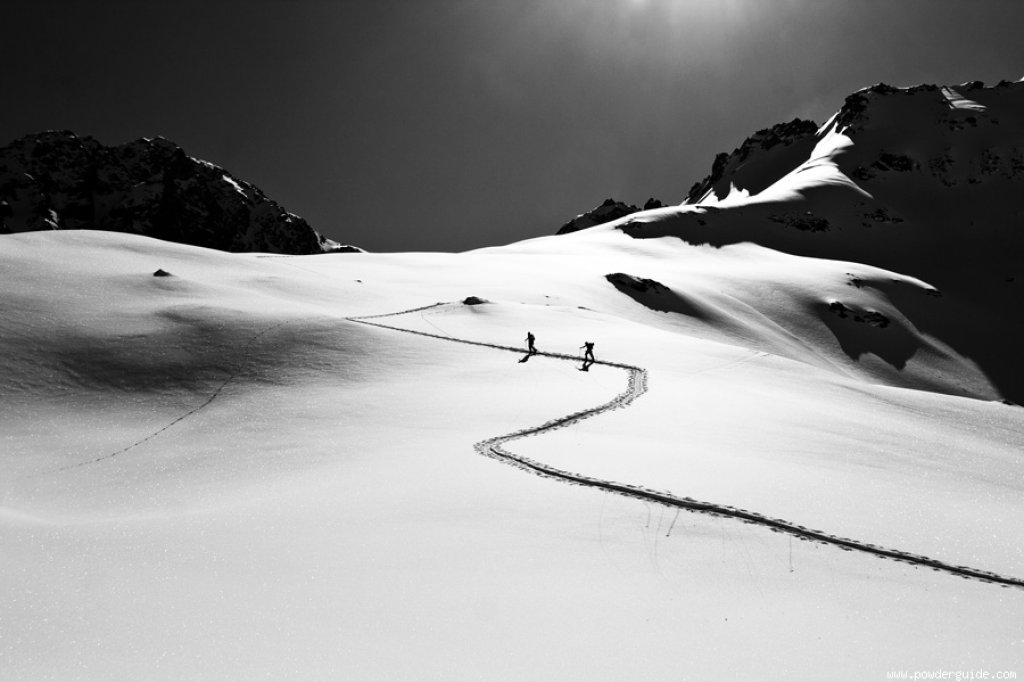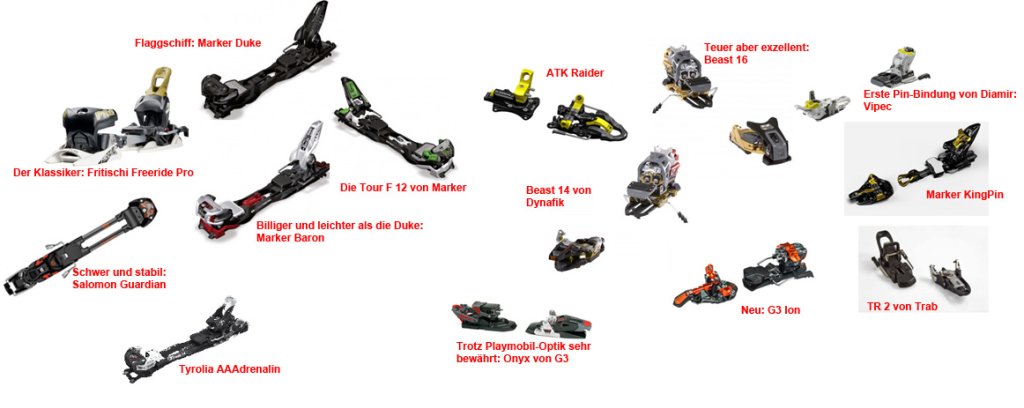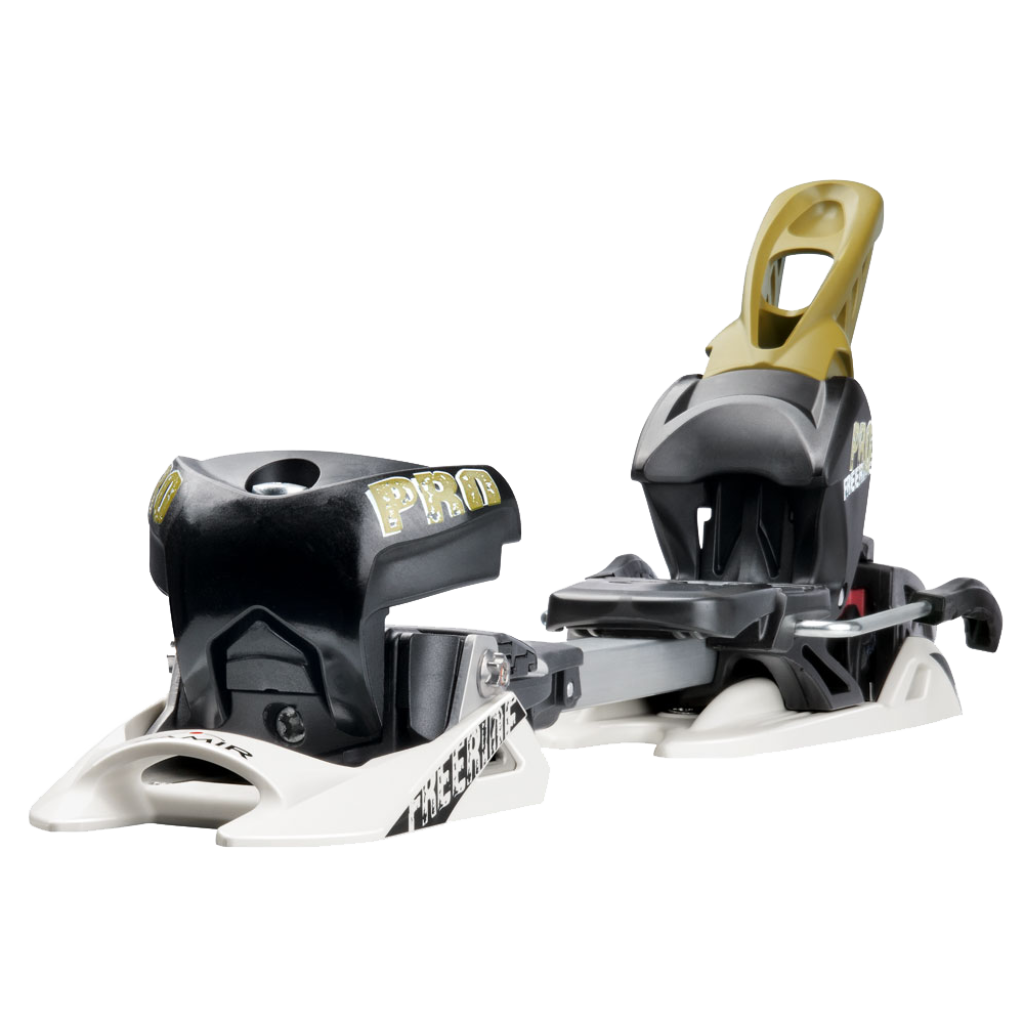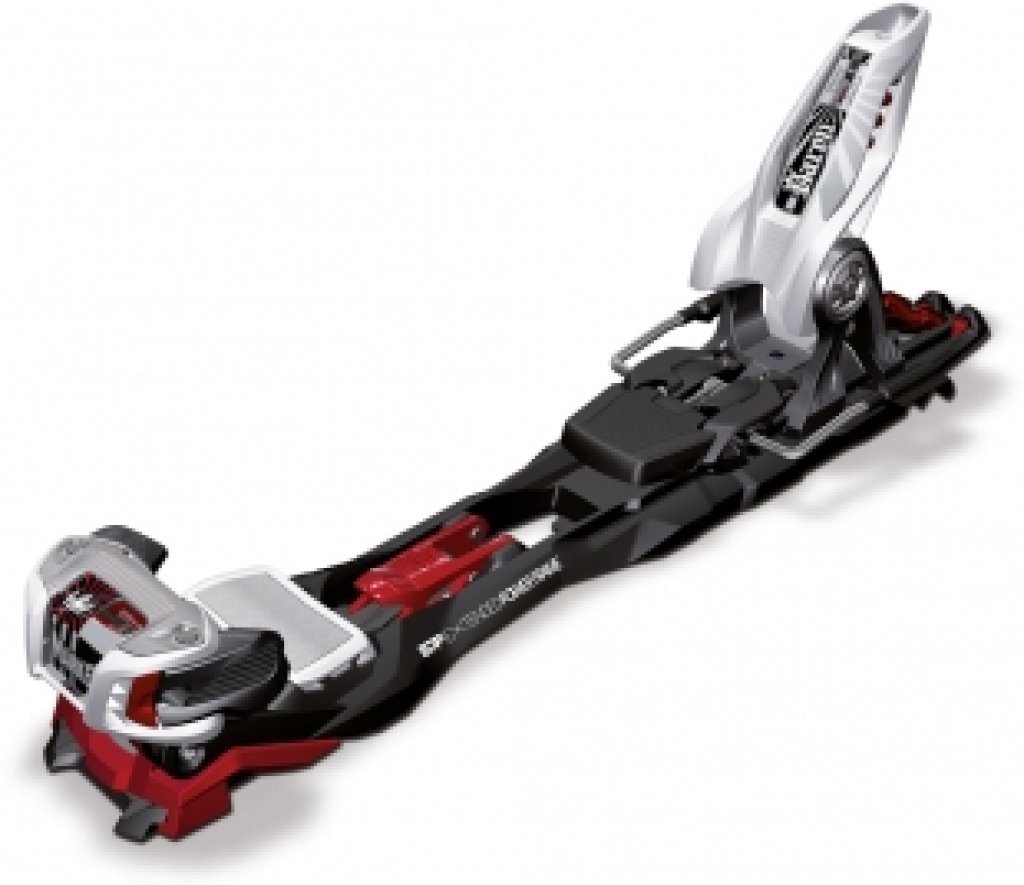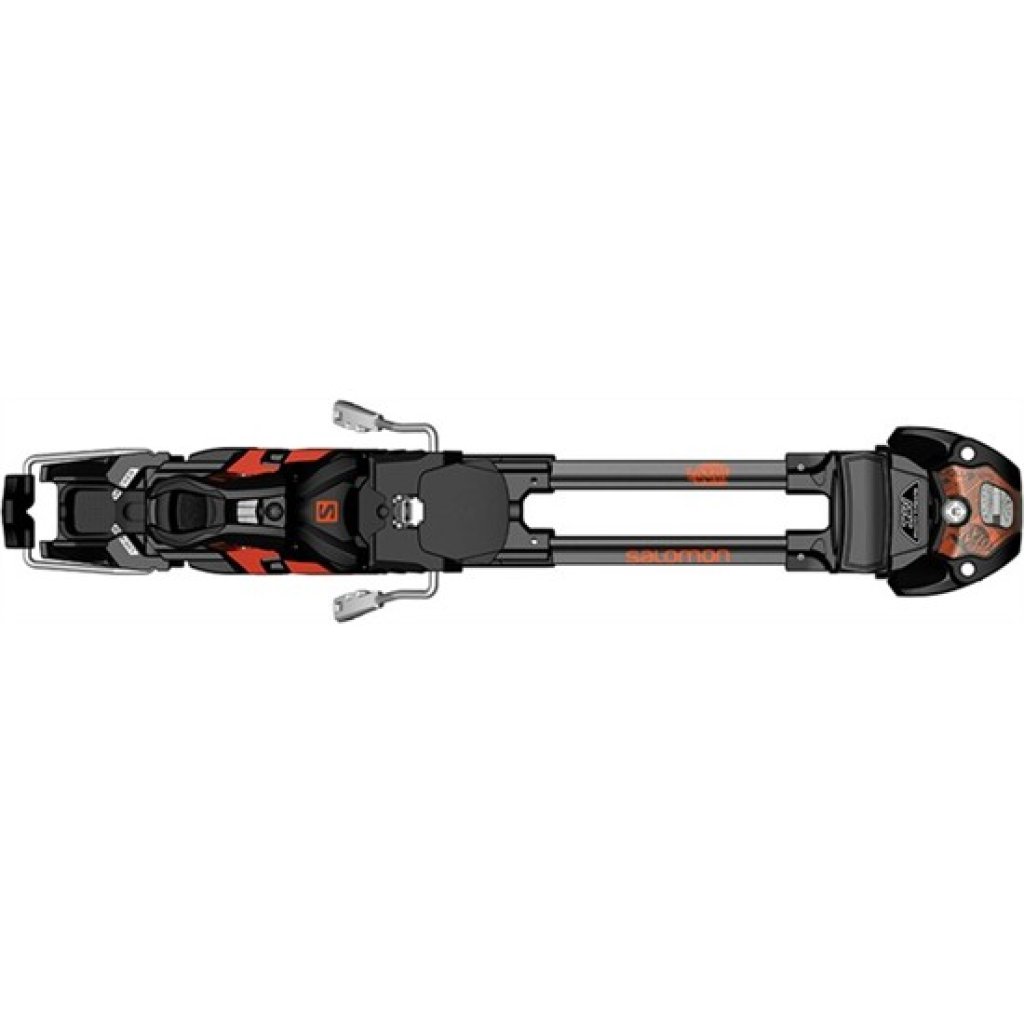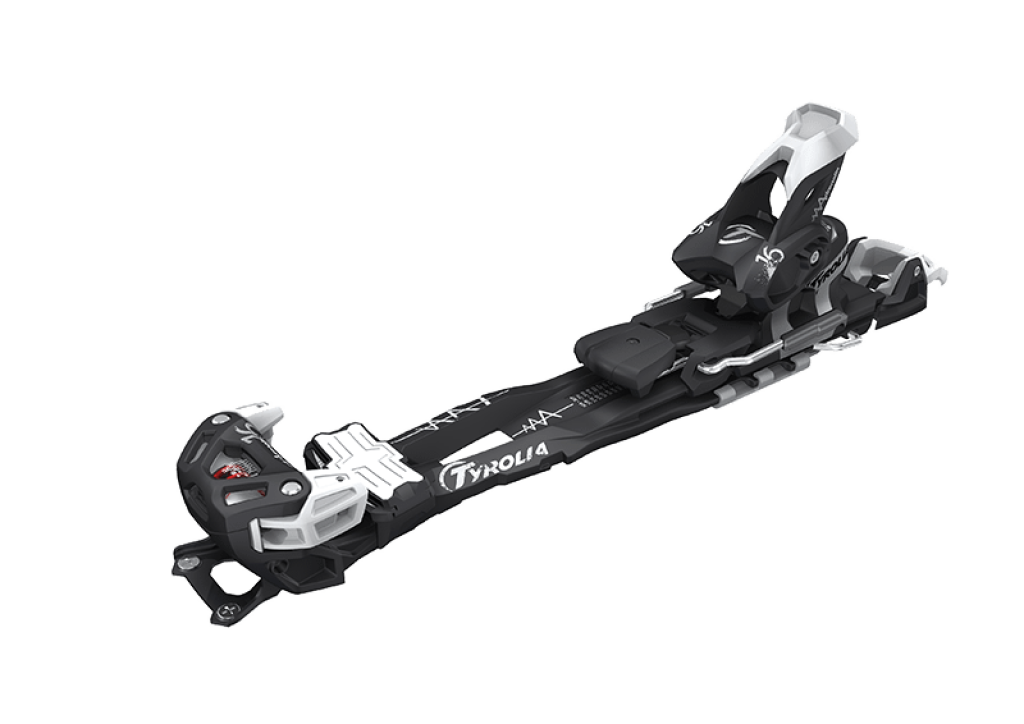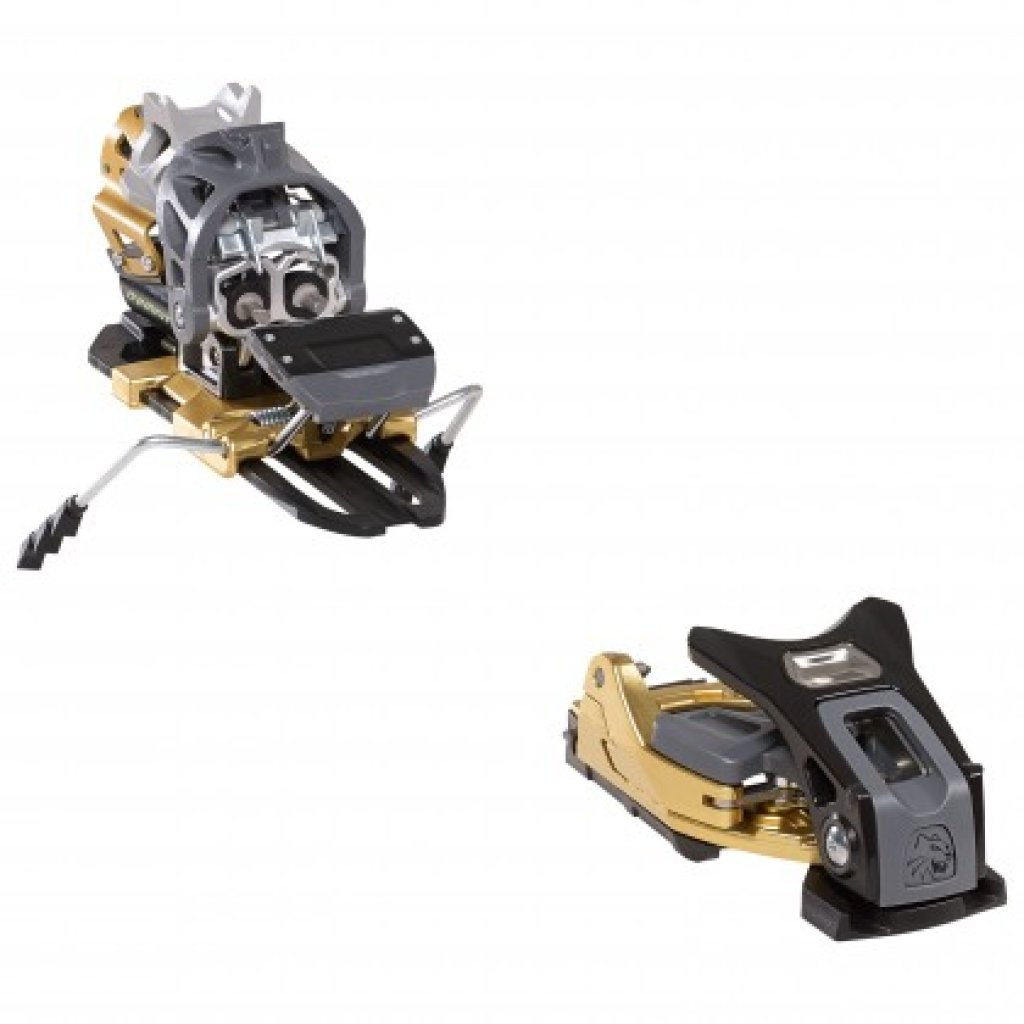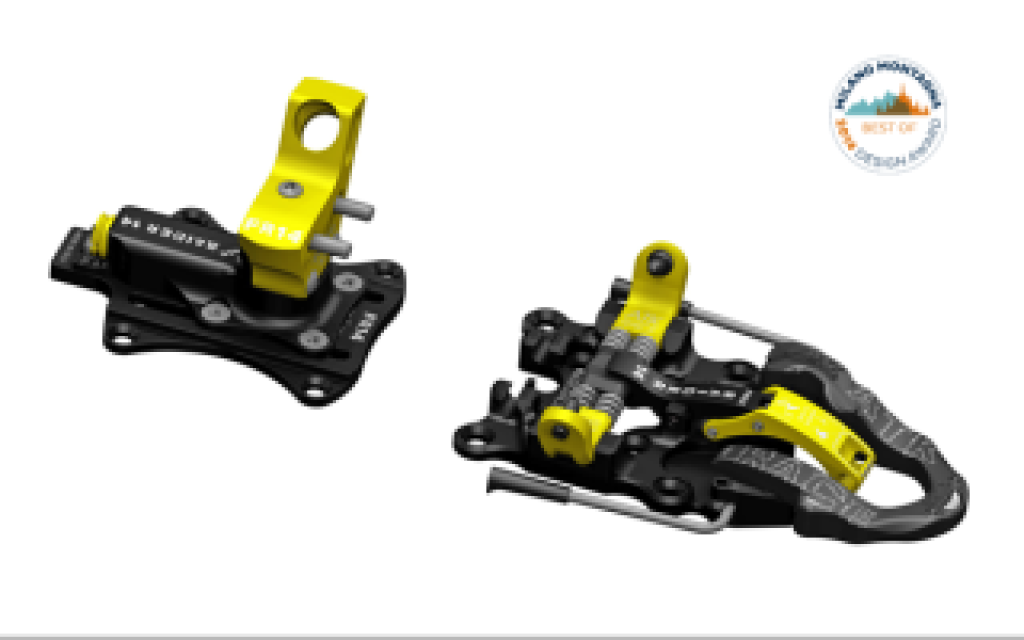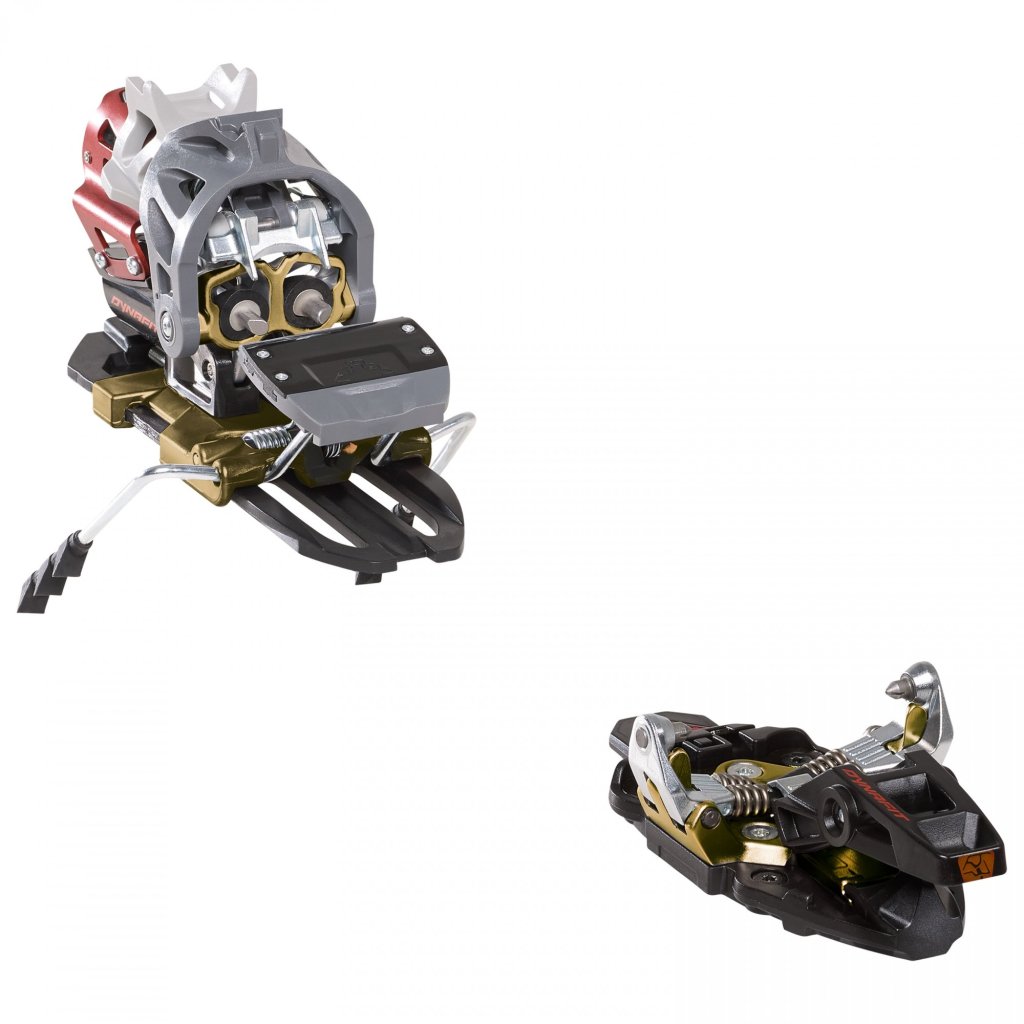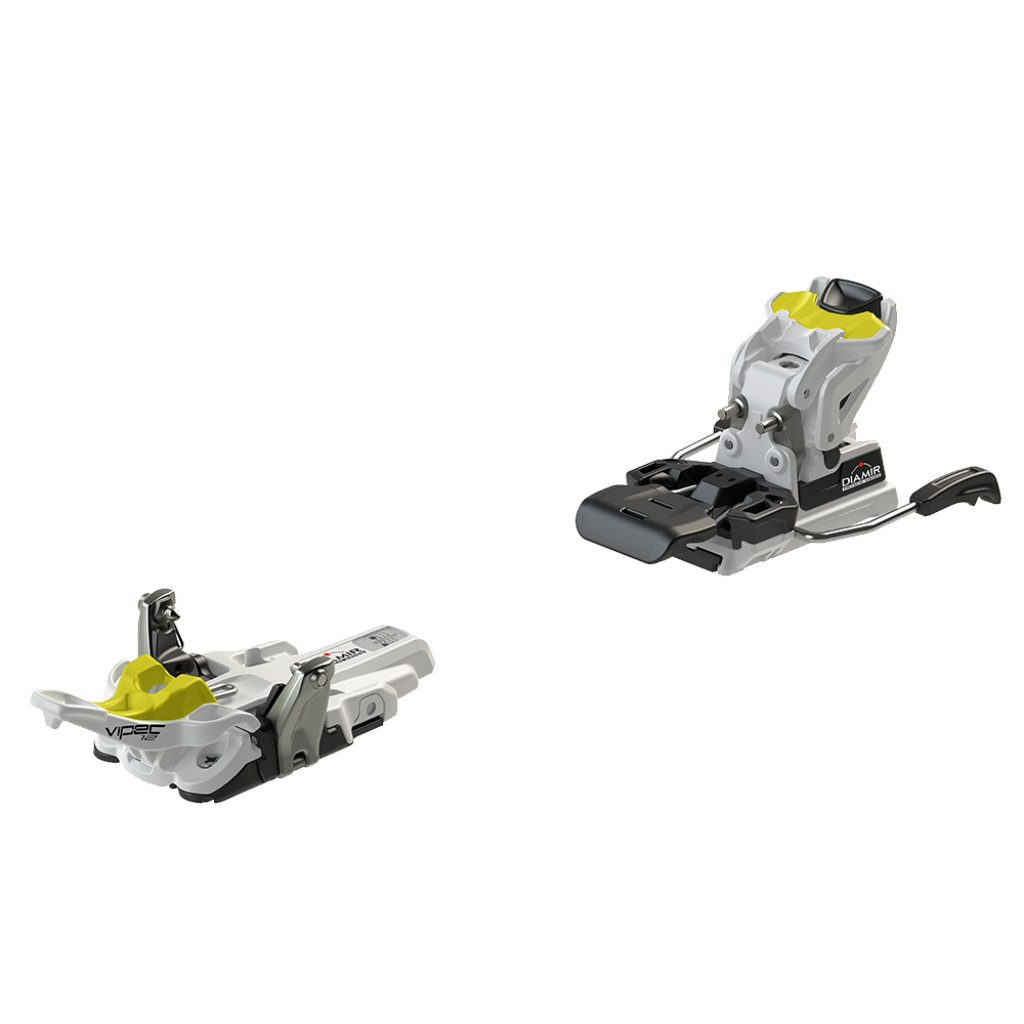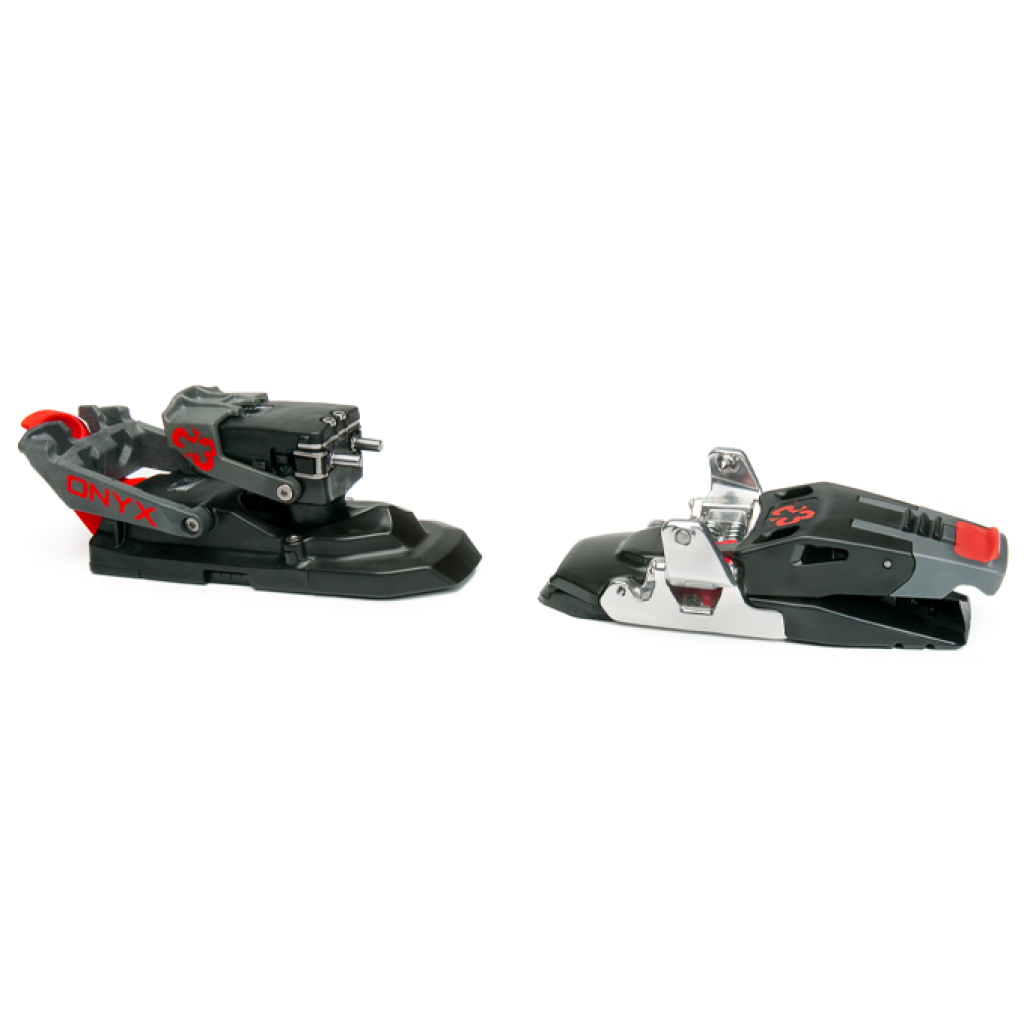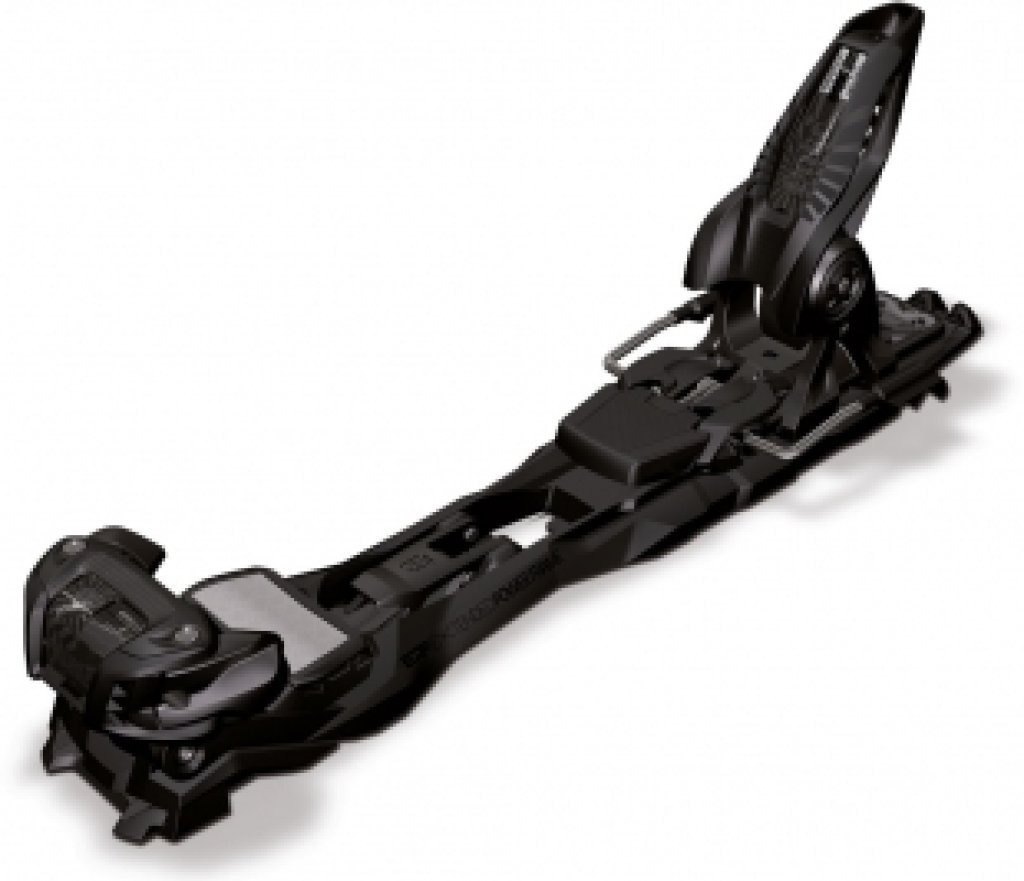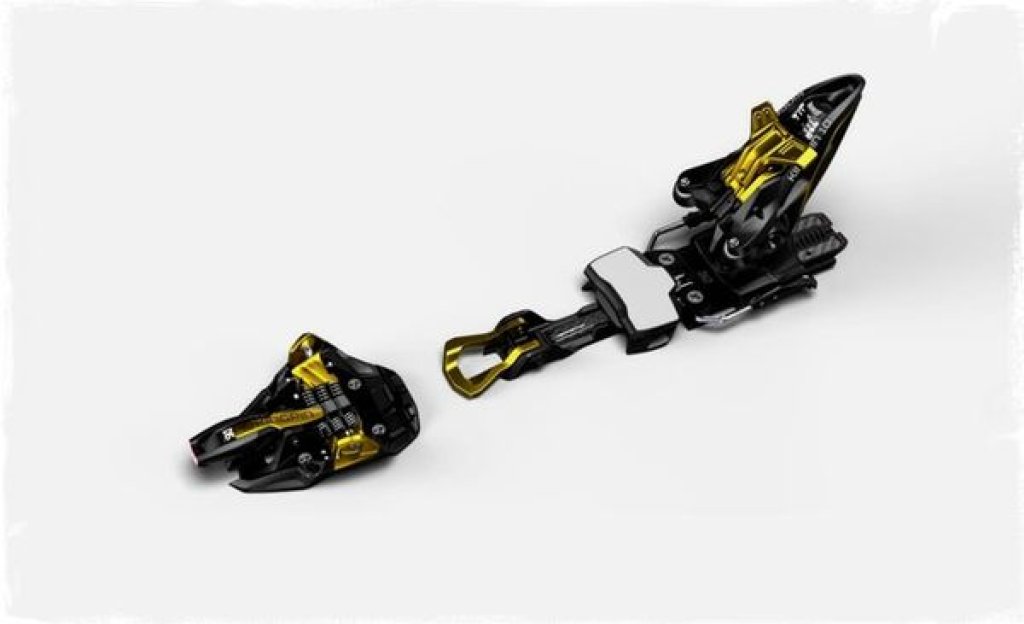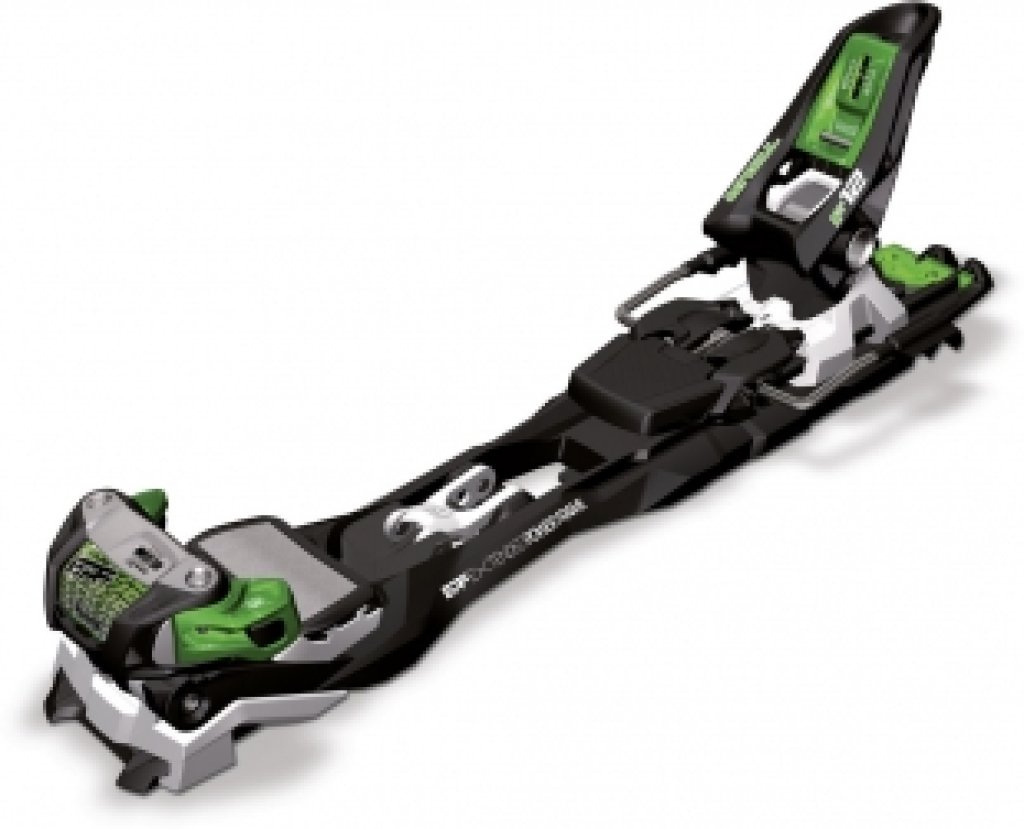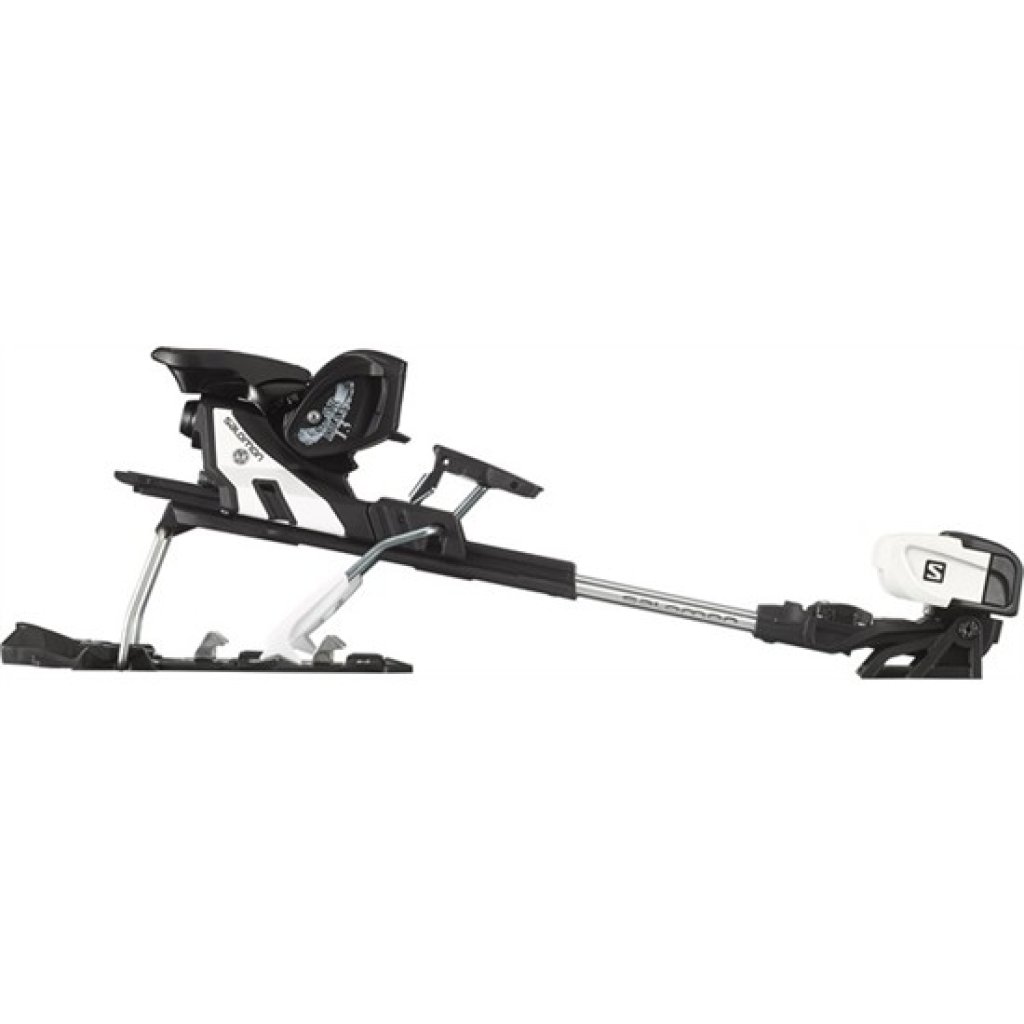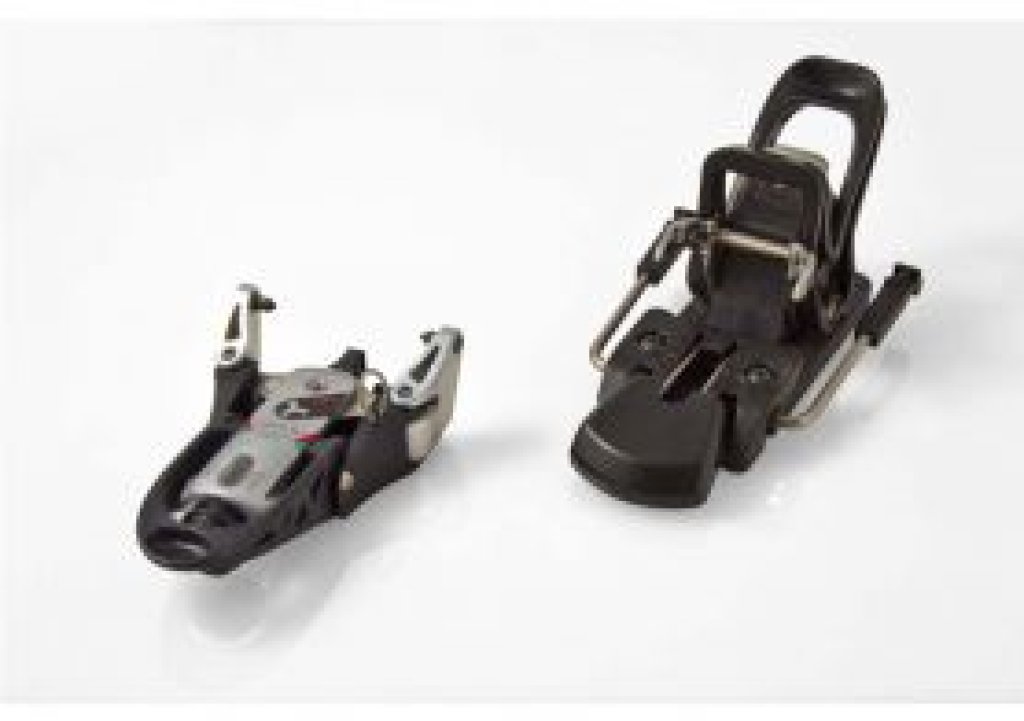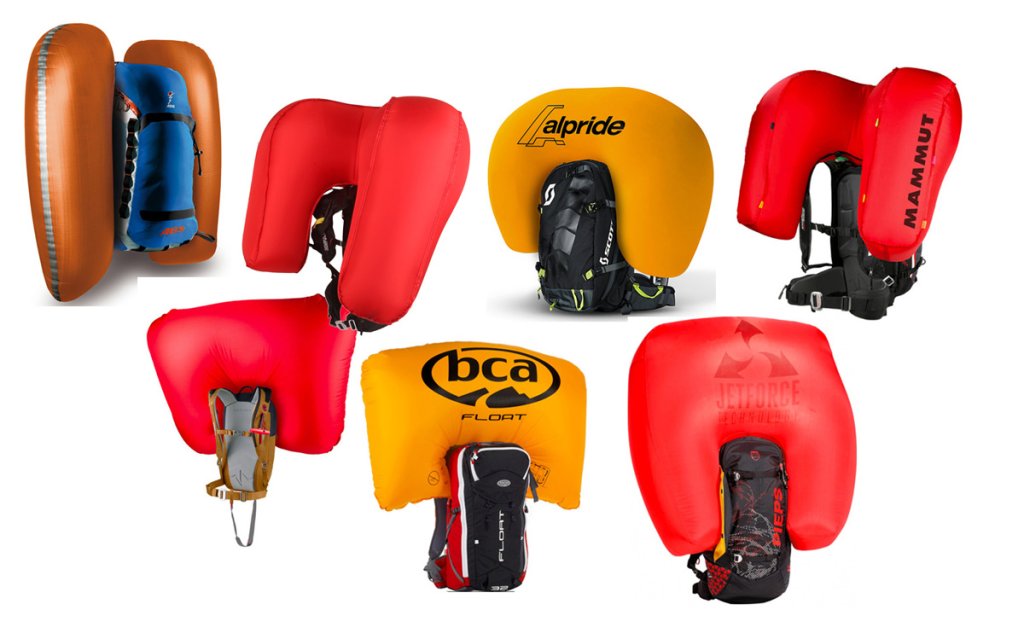Dynafit Beast 14, Beast 16
On the market since the 2013/14 season, the Dynafit Beast 16 has already gained a fan base. The binding offers great downhill performance and the other advantages of a pin binding and is also suitable for aggressive skiing and higher drops. In addition, the rear jaw enables length compensation of the ski bend and thus enables a more reliable release. However, at 1880 grams (per pair), it is also the heaviest pin binding. Added to this is the high price, the somewhat awkward changeover from ascent to descent and the fact that you have to make do without a flat climbing aid.
The Beast 14 differs from the Beast 16 in that it has a slightly lower maximum release value and the front jaw. This allows you to save some weight (1590 grams/pair) without losing much downhill performance. To use both the Beast 14 and the Beast 16, a special "insert" must be fitted to the heel of the boot, which is included with the binding. This is done quickly and is not a problem in principle, unless you also want to use the same boot in the Marker Kingpin or frame and/or alpine bindings. There are also problems with some boot models with interchangeable soles...
Originally announced for this season (2014/15), the equally interesting Radical 2.0 will not make it onto the market until next season.
Beast 14 Ascent *** Descent **** Handling *
Beast 16 Ascent *** Descent ***** Handling *
Find out more about the Beast 16 on the manufacturer's website...
Find out more about the Beast 14 on the manufacturer's website...
The Dynafit Beast 14 in the PG short test
Gear of the Week - Dynafit Beast 16
Diamir Fritschi Vipec
The Fritschi Vipec differs from the competition above all in that it enables a defined release on the toe piece - a real safety plus. The binding is also very easy to use, allowing you to switch from downhill to uphill mode (and vice versa) without having to take off your skis or bend down (something only some frame bindings and the G3 Onyx can do). The whole thing weighs less than a kilo (940 grams without brakes) per pair. The Vipec is the only pin binding on the market that cannot be locked at the front when climbing, which can of course be an advantage in the event of an avalanche, but can also lead to the loss of a ski on hard traverses or similar.
Uphill ***** Downhill **** Handling ****
Find out more about the Diamir Vipe on the manufacturer's website...
G3 - Ion, Onyx
The Canadians from G3 also have two classic pin bindings in their range. Although the Onyx scores neither with its stylish appearance nor its very plastic construction, it has proven to be very reliable. The pre-tensioned pins on the toe piece take some getting used to, but prevent the pin 1.0-typical false releases. The binding is also quite comfortable to use, more durable than it looks and allows the mounting point to be moved. At 1280 grams (per pair, without stopper), it is in the mid-range in terms of weight.
The new Ion is slightly lighter (1170 grams incl. stopper) and has a classic-looking toe piece, which has only been slightly optimized compared to the traditional shape of the Dynafit TLTs. However, the adjustable contact pressure of the rear jaw allows for compensation of the ski bend, which is already a step ahead.
Why G3 did not combine the innovative rear jaw of the Ion with an Onyx-style front jaw will probably remain a mystery...
ION Ascent ***** Descent **** Handling ***
Onyx Ascent **** Descent **** Handling **
Find out more about the Onyx on the G3 website...
You can find a detailed PG test of the Onyx here...
Find out more about the Ion on the G3 website...
Marker Kingpin
One of the most interesting new products in the binding sector this season was definitely the Marker Kingpin, the first time one of the major binding manufacturers has launched a pin binding on the market. Unlike the competition, no inserts are required at the rear jaw, the mechanism is similar to that of an alpine binding and snaps into place at the edge of the boot, while a classic pin front jaw connects the boot to the ski at the front. The rear jaw ensures elasticity and high ease of use, while the front jaw is light and uncomplicated. At 730 grams (per piece including stoppers), the Kingpin is not the lightest, but also not the heaviest of the pin bindings presented here. It impresses with high comfort and good downhill performance, but long-term experience is still pending.
The Marker Kingpin is available in two versions, one with a release value of 5-10 and one with 6-13.
Uphill **** Downhill **** Handling ****
Find out more about the Kingpin on the manufacturer's website...
The KingPin in the PG short test...
Trab TR2
The TR2 from the small Italian ski and binding manufacturer Trab has made it onto the market this season after several years of development. Despite the limited selection of suitable boots (only 2 Scarpa models have the necessary special inserts ex works, other touring boots have to be modified by certified dealers), it quickly established itself on the market. It also has a defined, adjustable release on the toe piece, a contact pressure for length compensation on the rear toe piece and weighs just 1160 grams per pair (including stopper). The main problems with the binding lie in its availability and the limited range of matching boots.
The Trab TR2 is also available in two versions, one with release values between 7 and 13, the other with 5 to 11.
Ascent **** Descent **** Handling ****
Find out more about the TR on the website of the manufacturer Trab...
Conclusion
All bindings have advantages and disadvantages. Pin bindings are currently "in", but frame bindings still have a right to exist, especially due to the significantly better selection of shoes and the safety release. They are particularly recommended for heavy use in the ski area with only occasional ascents or for problematic feet.
For long tours where weight and ascent performance play a role (at least to a certain extent), there is hardly any way around the new pin bindings. They can all cope with faster skiing and, with a few restrictions, are also fully suitable for action!
